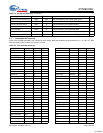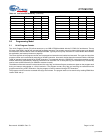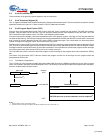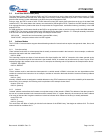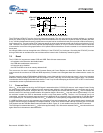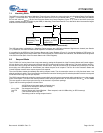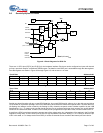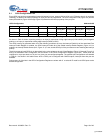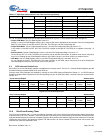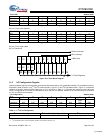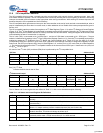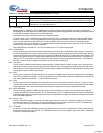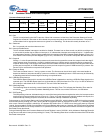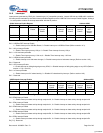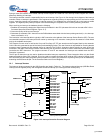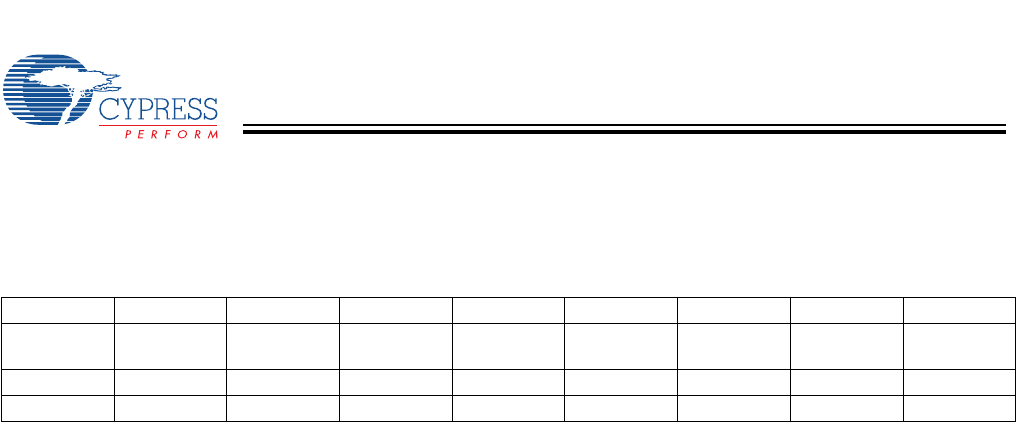
CY7C65113C
Document #: 38-08002 Rev. *D Page 18 of 49
9.1 GPIO Configuration Port
Every GPIO port can be programmed as inputs with internal pull-ups, outputs LOW or HIGH, or Hi-Z (floating, the pin is not driven
internally). In addition, the interrupt polarity for each port can be programmed. The Port Configuration bits (Figure 9-4) and the
Interrupt Enable bit (Figure 9-5 through Figure 9-6) determine the interrupt polarity of the port pins
.
As shown in Table 9-1 below, a positive polarity on an input pin represents a rising edge interrupt (LOW to HIGH), and a negative
polarity on an input pin represents a falling edge interrupt (HIGH to LOW).
The GPIO interrupt is generated when all of the following conditions are met: the Interrupt Enable bit of the associated Port
Interrupt Enable Register is enabled, the GPIO Interrupt Enable bit of the Global Interrupt Enable Register (Figure 14-1) is
enabled, the Interrupt Enable Sense (bit 2, Figure 13-1) is set, and the GPIO pin of the port sees an event matching the interrupt
polarity.
The driving state of each GPIO pin is determined by the value written to the pin’s Data Register (Figure 9-2 through Figure 9-3)
and by its associated Port Configuration bits as shown in the GPIO Configuration Register (Figure 9-4). These ports are
configured on a per-port basis, so all pins in a given port are configured together. The possible port configurations are detailed
in Table 9-1. As shown in this table below, when a GPIO port is configured with CMOS outputs, interrupts from that port are
disabled.
During reset, all of the bits in the GPIO Configuration Register are written with ‘0’ to select Hi-Z mode for all GPIO ports as the
default configuration.
GPIO Configuration Address 0x08
Bit # 76543210
Bit Name Reserved Reserved Reserved Reserved Port 1
Config Bit 1
Port 1
Config Bit 0
Port 0
Config Bit 1
Port 0
Config Bit 0
Read/Write - - - - R/W R/W R/W R/W
Reset ----0000
Figure 9-4. GPIO Configuration Register
[+] Feedback



